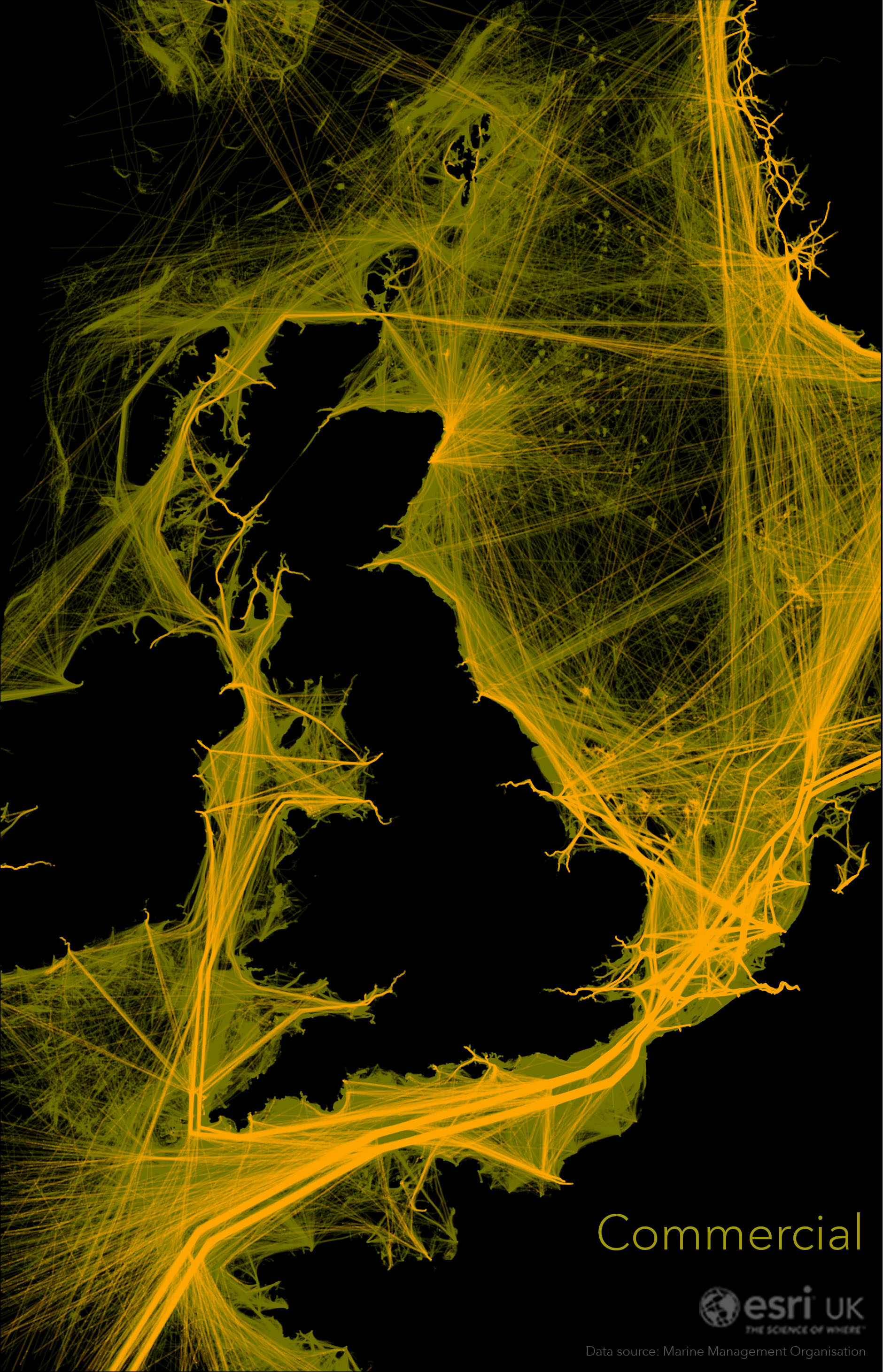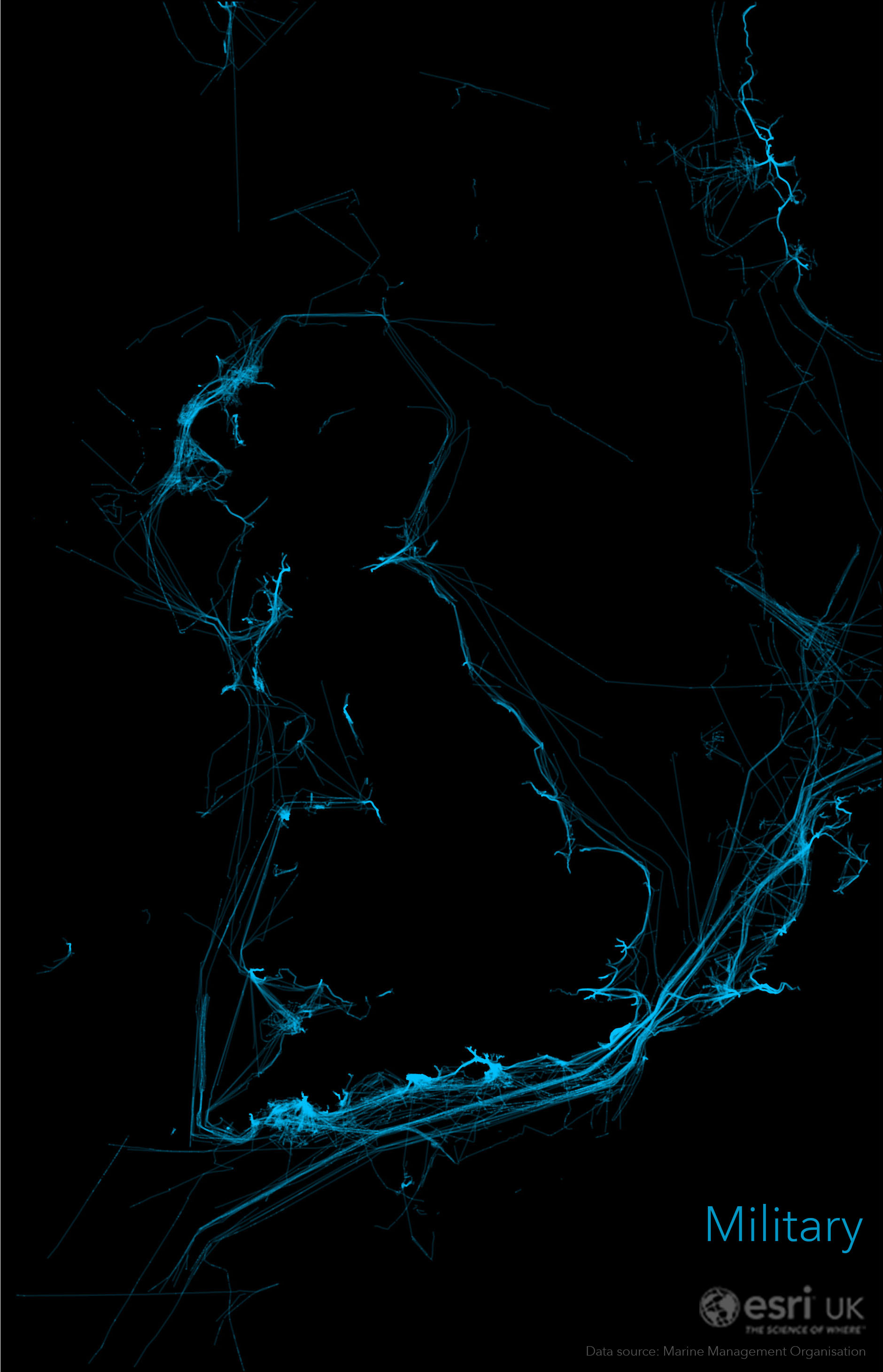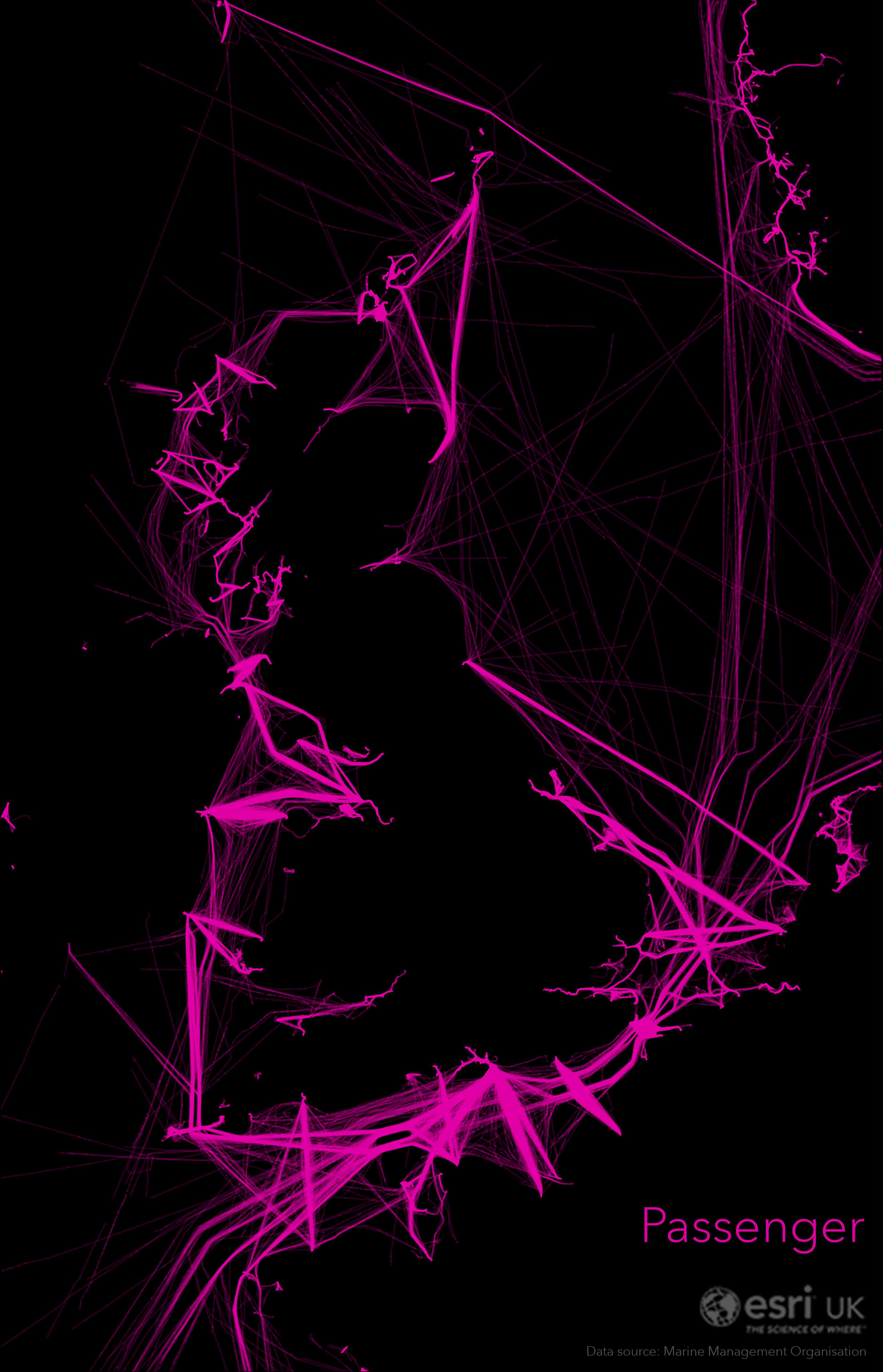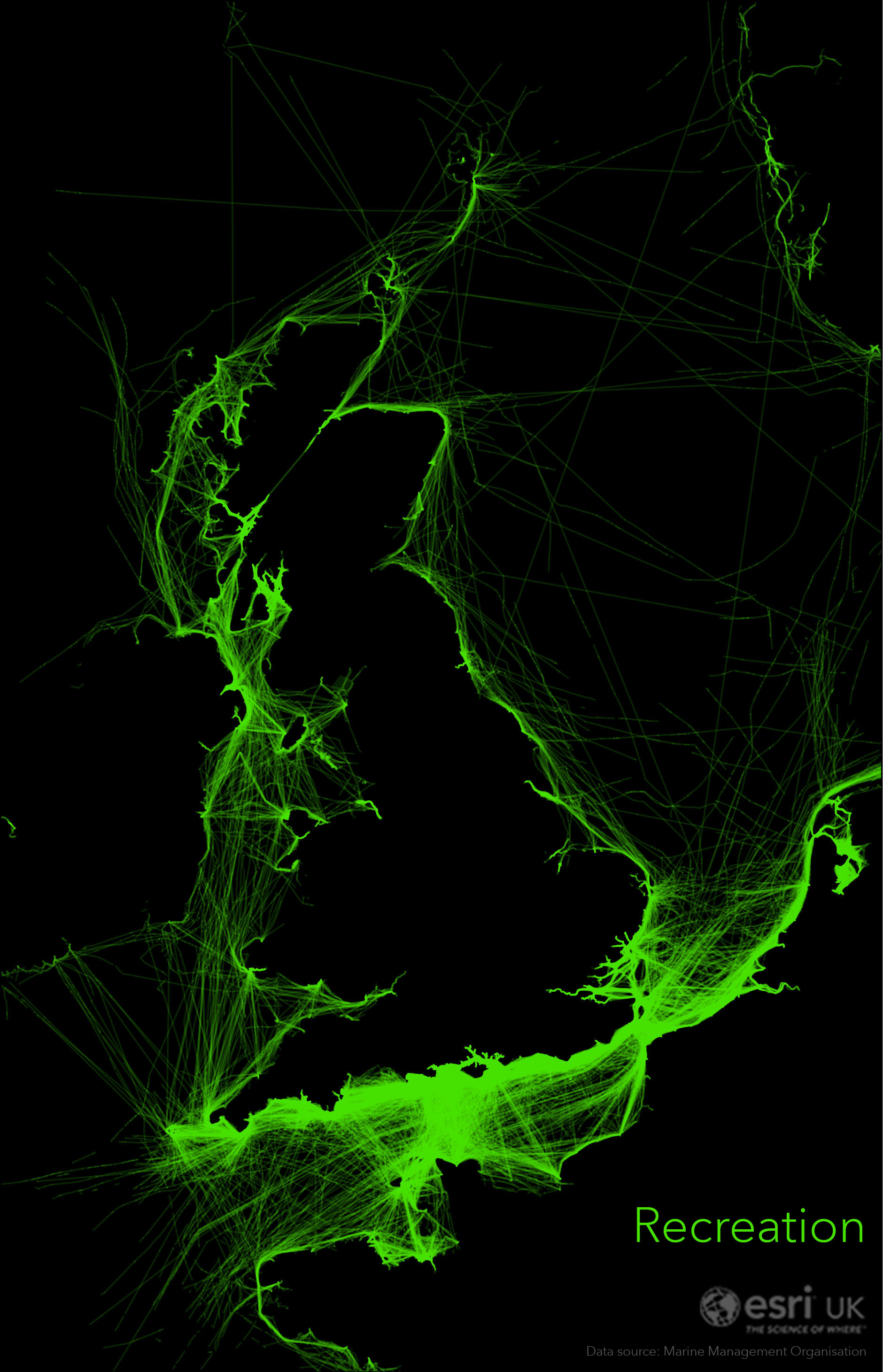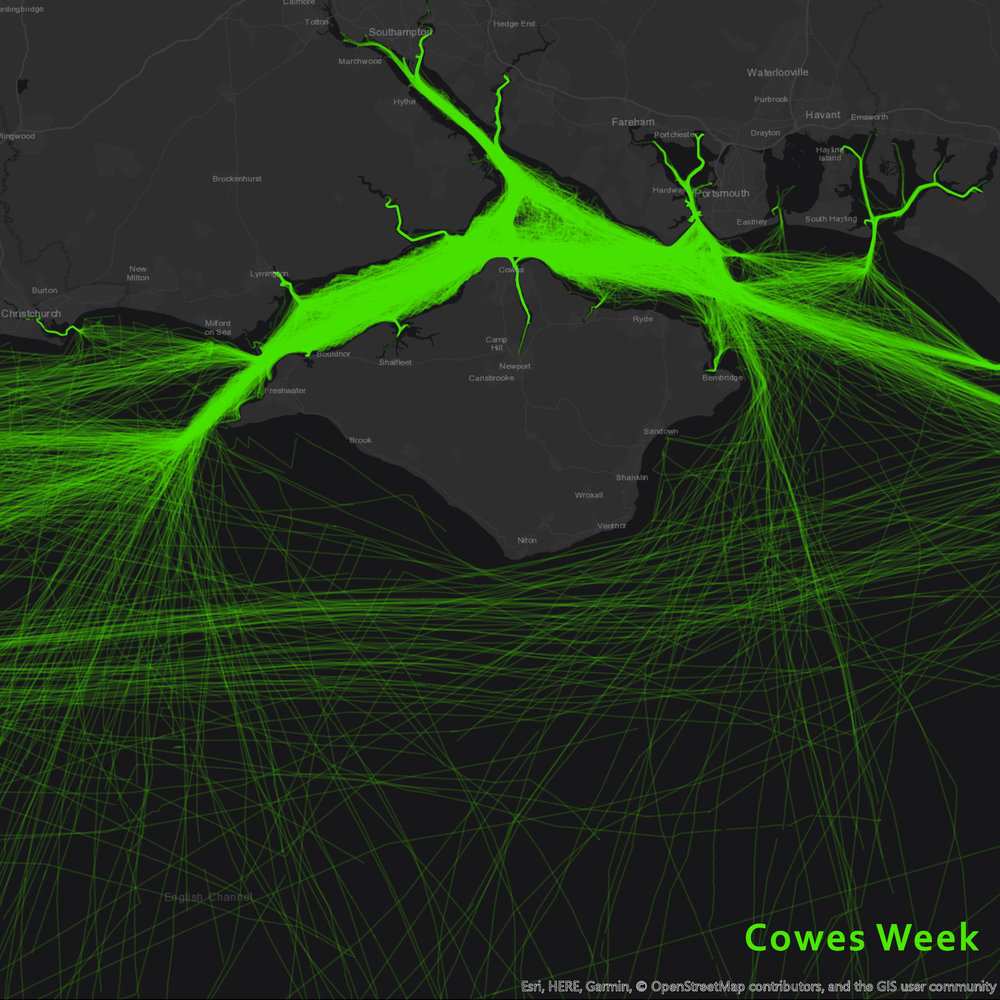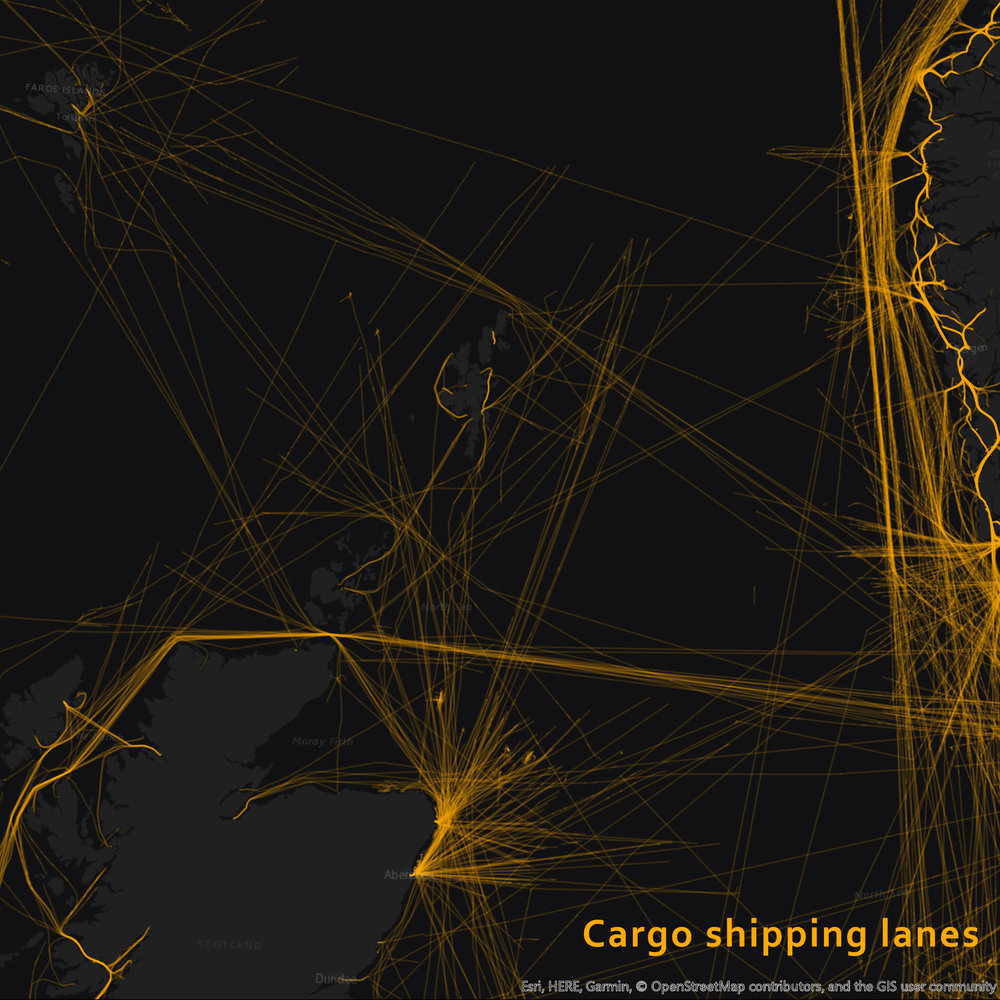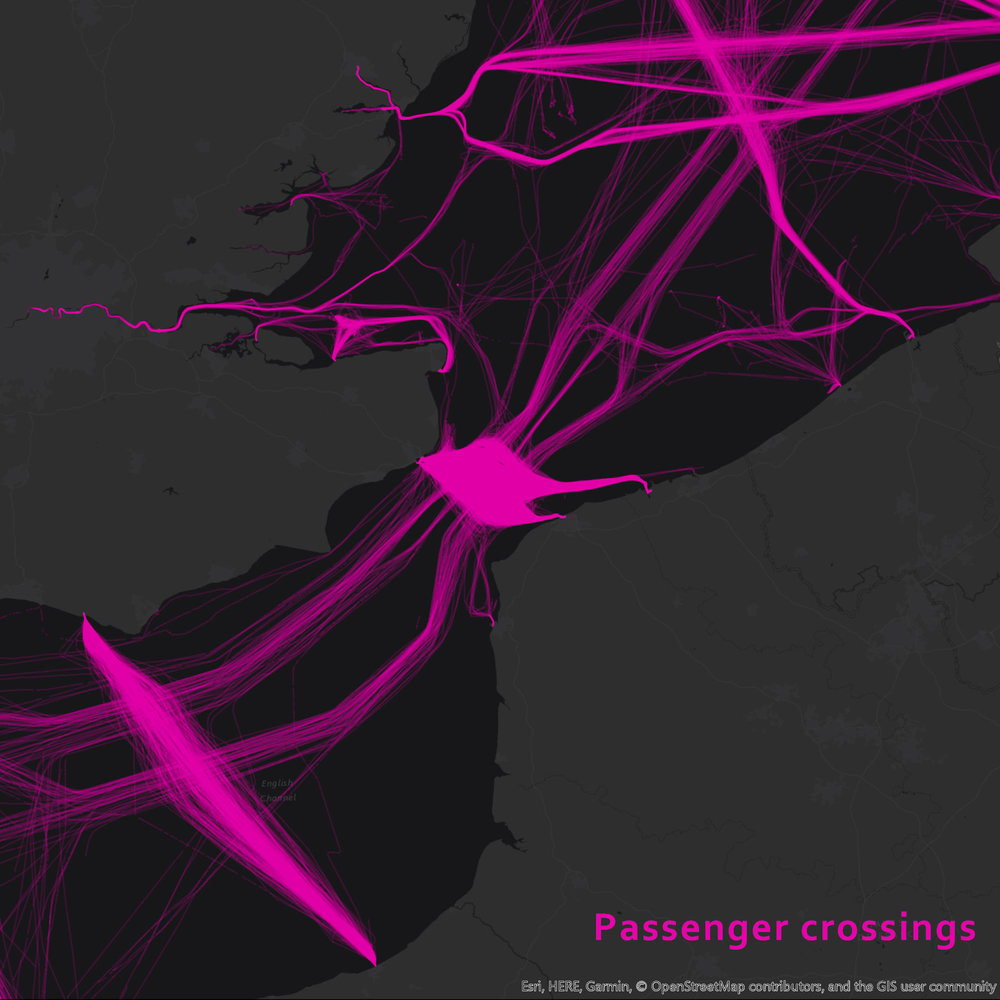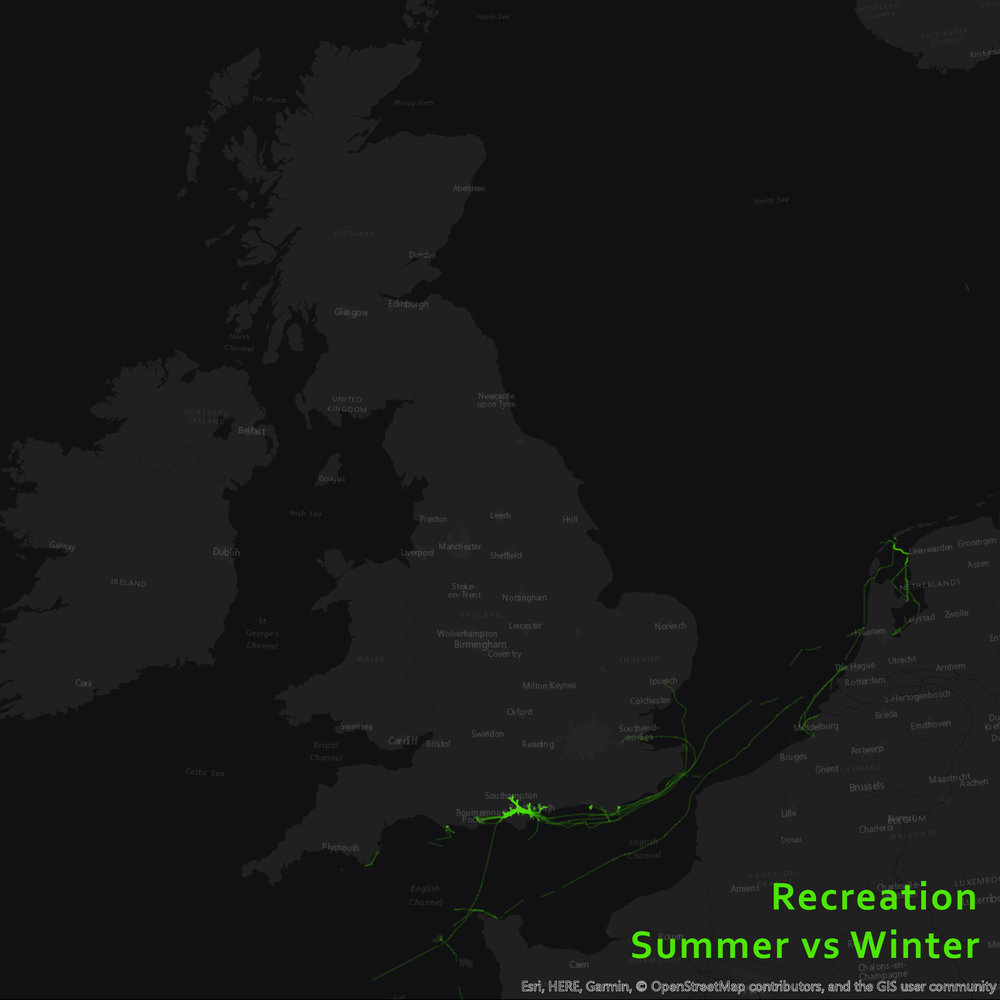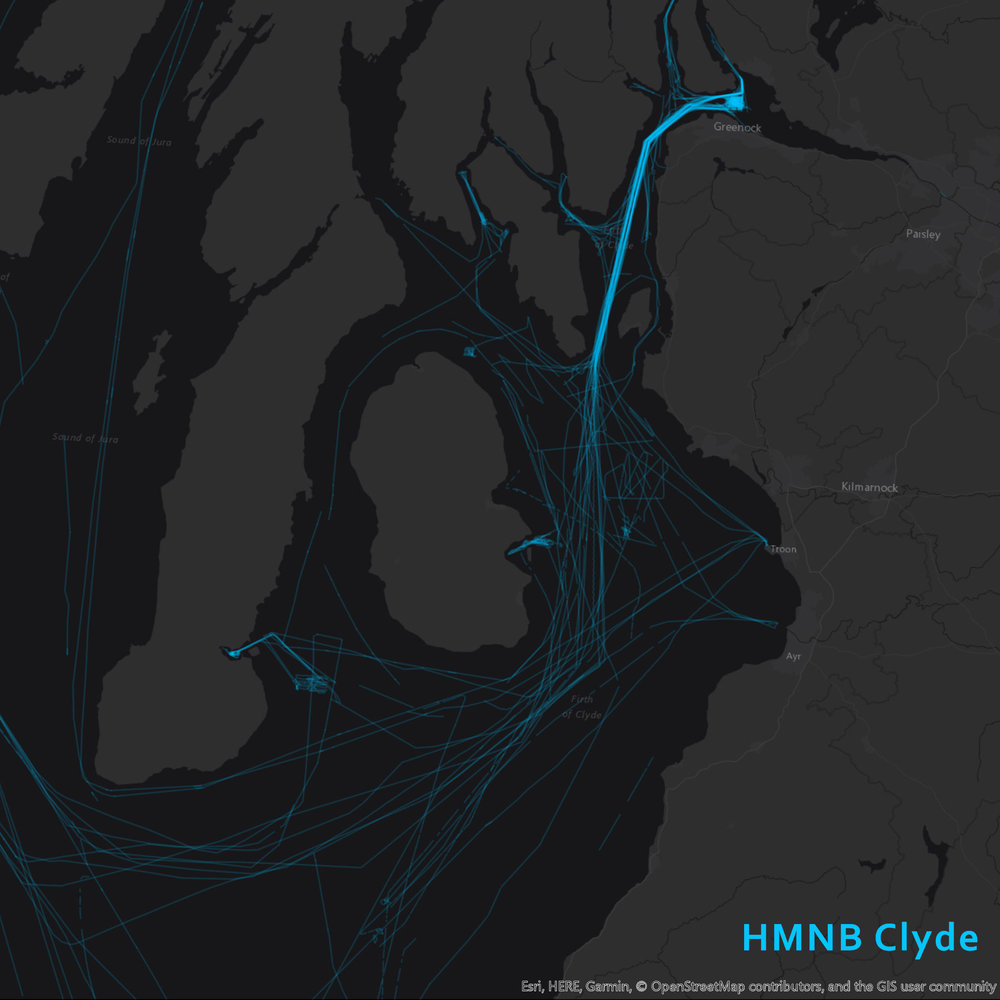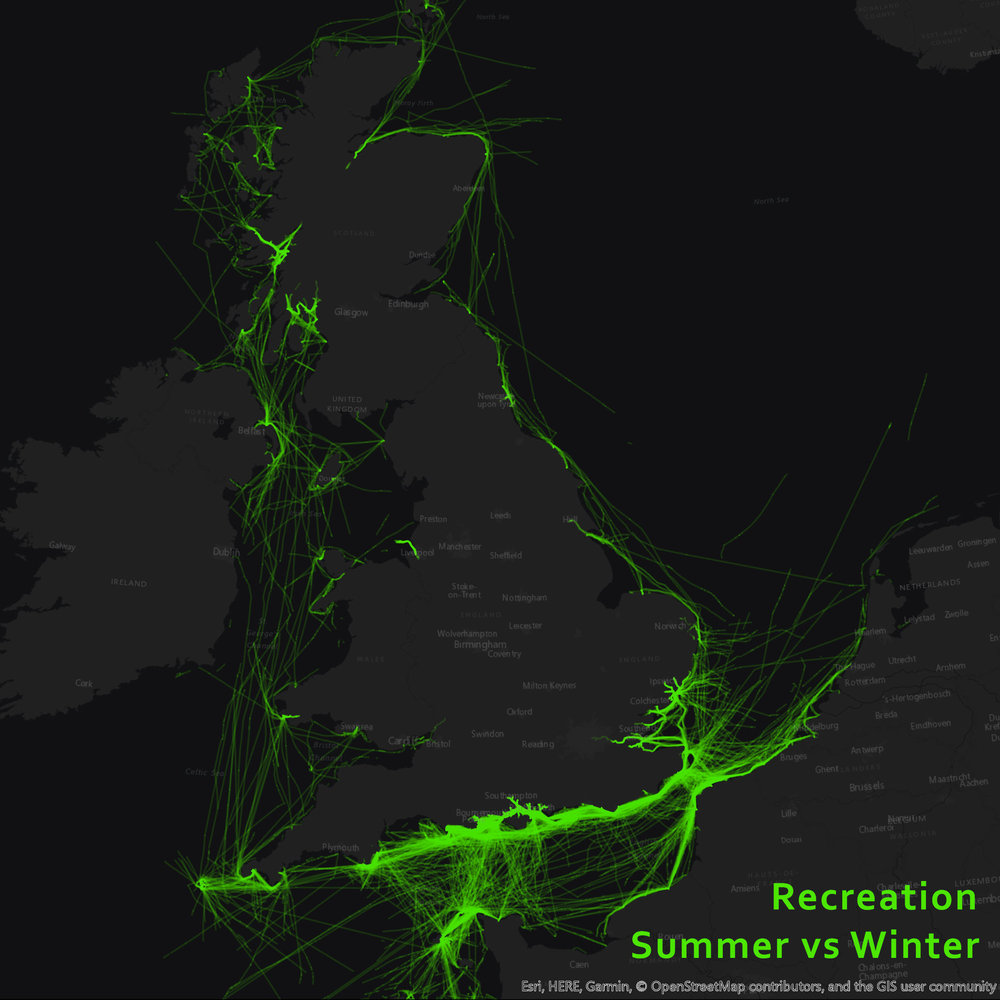The world’s busiest shipping lanes are in UK waters. In the Dover Strait alone, around 400 vessels pass through our waters every day. We often hear about what is happening on UK soil, but as an island, do you know what goes on in our waters?
ABPMer built an Esri app to share the 2015 AIS data they processed on behalf of the Marine Management Organisation. Toggling between the layers I was curious, there were a lot of transit lines. Our seas looked chaotic yet, we don’t often hear of vessels colliding out at sea. How do vessels, big and small, navigate around each other?
I downloaded the data from AMPMer’s app and started to play. Showing the data month by month reduced the overall line density but there were still too many transits to see patterns. Some tweaks to the layer’s symbology were needed.
By setting the maps background to black and by changing the colour transparency to 85%, you could begin to see where the transit lines were more concentrated. The brighter the line, the more popular the route. These were the shipping lanes. The Dover Strait is like the M25 of our sea.
The animation shows the overall traffic in our waters throughout 2015 quite nicely now. However, it doesn’t tell us much about the types of vessels that are passing through.
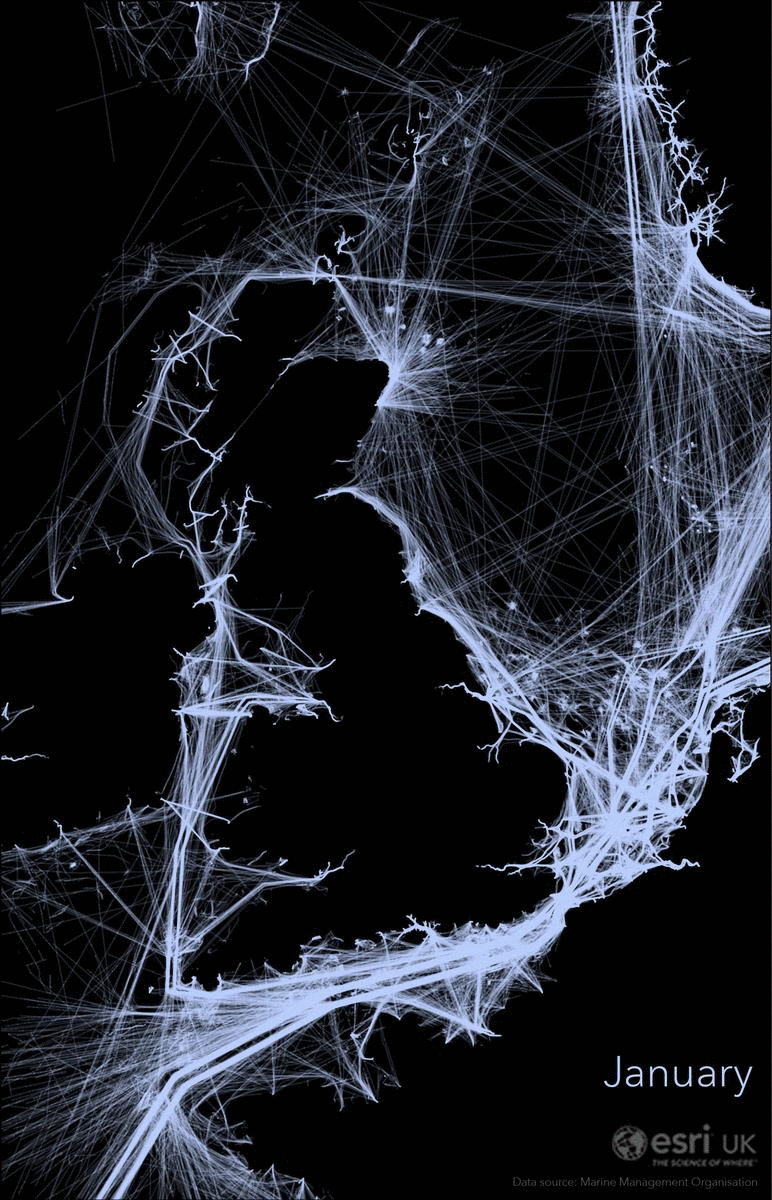
What’s what?
I categorised the data again, this time by vessel type:
You can tell we’re an island. Vessels interact with so much of our coastline that you don’t need a basemap to tell that these images are of the UK. As an island, it’s maybe unsurprising to see that a lot of the boats in our channels are transporting cargo or delivering other commercial-based services. But looking at passenger vessels, aside from the common crossings from the south coast to France, there was a remarkable number of trips stemming from all over our coastline.
Look more closely and you can start to identify some maritime landmarks and interesting trends. I’m amazed how wimpish we Brits are when it comes to winter watersports… If you’re not so interested in the nautical side of things, just enjoy the pretty patterns they make.
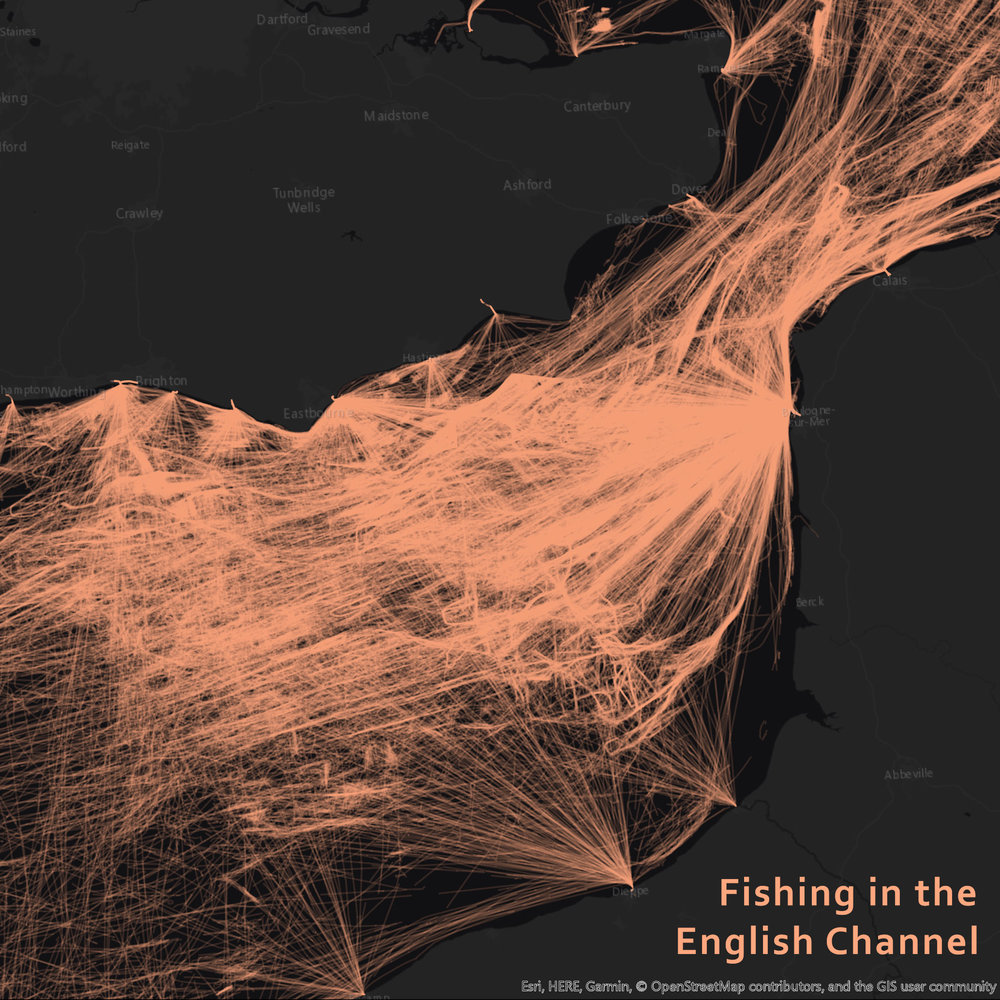
Give it a go and see what interesting activities you can spot in UK waters.
Happy mapping!
